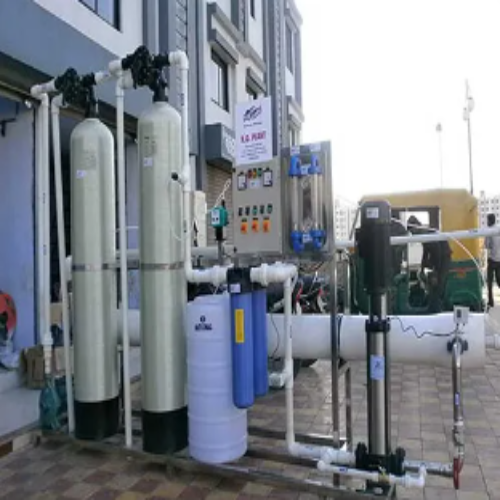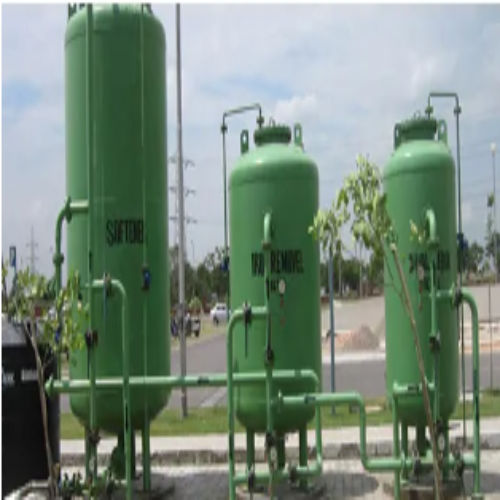Water Treatment Plant Manufacturers in Delhi NCR
Price 360000 INR/ Unit
Water Treatment Plant Manufacturers in Delhi NCR Specification
- Usage & Applications
- Industrial
- Drive Type
- Electric
- Material
- Stainless steel
- Automatic Grade
- Full Automatic
- Voltage
- 220 Volt (v)
- Water Source
- Ground Water
Water Treatment Plant Manufacturers in Delhi NCR Trade Information
- Minimum Order Quantity
- 1 Unit
- Payment Terms
- Cash in Advance (CID)
- Supply Ability
- 500 Units Per Month
- Main Domestic Market
- All India
About Water Treatment Plant Manufacturers in Delhi NCR
Our company is a leading Water Treatment Plant Manufacturer in India. A Water Treatment Plant/WTP is used to make water more acceptable for a desired end-use. These can include use as drinking water, industrial processes, medical and many other uses. The goal of our effective water treatment plant is to remove existing contaminants in the water and reduce the concentration of such contaminants so the water becomes fit for its desired end-use.
The processes involved in our Effective Water Treatment Plant/WTP for drinking purpose may be solids separation using physical processes such as settling and filtration, and chemical processes such as disinfection and coagulation. Biological processes are employed in the treatment of wastewater and these processes may include, for example, aerated lagoons, activated sludge or slow sand filters.
TREATMENT PLANT FOR EFFLUENT
Water Treatment plants are used to make water reusable by eradicating dissolved impurities present in it. We are recognized as one of the staggering WTP Manufacturer in India. We are one of the top manufacturers and suppliers of water treatment system and waste water treatment plants in India. We have Water Treatment plant designed for small medium and large scale i.e. from 1000 lph water treatment system to 40,000 lph.
Key Steps in the Water Treatment Process
Coagulation and Flocculation
- Coagulation Chemicals usually alum or ferric chloride are added to the raw water to destabilize particles dirt organic matter and other contaminants suspended in the water
- Flocculation The water is gently mixed causing small particles to clump together forming flocs These larger clumps are easier to remove in the following stages
Sedimentation
The water is allowed to sit in a large tank where the heavy flocs settle at the bottom due to gravity This process helps remove the majority of suspended solids reducing turbidity cloudiness in the water
Filtration
- The water passes through a series of filters made of sand and sometimes activated carbon to remove smaller particles bacteria and other impurities that were not removed during sedimentation
- Slow Sand Filtration and Rapid Sand Filtration are commonly used techniques Activated carbon filters may also be employed to remove organic compounds chlorine and other chemicals
Disinfection
- To kill any remaining bacteria viruses and other pathogens disinfection is carried out usually with chlorine ozone or ultraviolet UV light
- Chlorine is the most common disinfectant because its effective and provides residual protection against recontamination However some plants may use UV light for disinfection without adding chemicals
pH Adjustment
If necessary chemicals like lime or sodium hydroxide are added to adjust the pH of the water Water that is too acidic or alkaline can corrode pipes or affect the effectiveness of other treatment processes
Fluoridation Optional
In some regions fluoride is added to the water to help prevent tooth decay following local government recommendations
Storage
- After treatment the purified water is stored in clean reservoirs or tanks before being distributed to homes businesses and industries
- Storage allows for a buffer in case of fluctuations in water demand
Additional Treatments:
- Reverse Osmosis RO This is an advanced filtration process used to remove salts and other dissolved contaminants particularly in areas with saline or hard water
- Desalination For areas with limited freshwater sources seawater desalination plants use reverse osmosis or distillation to produce freshwater from seawater
Importance of Water Treatment Plants:
- Health Protection Ensures safe drinking water free from harmful pathogens chemicals and pollutants
- Environmental Safety Protects local ecosystems from contamination by ensuring that treated water released back into rivers or other water bodies is clean
- Regulatory Compliance Helps municipalities meet drinking water standards set by national and international health organizations such as the EPA in the US or the WHO globally
Types of Water Treatment Plants:
- Municipal Water Treatment Plants Serve large populations treating water for drinking and domestic use
- Industrial Water Treatment Plants Treat water used in industrial processes often involves more specific treatment for contaminants
- Desalination Plants Convert seawater or brackish water into potable water typically using reverse osmosis
Challenges in Water Treatment:
- Water Contamination Contaminants such as heavy metals pesticides and industrial chemicals may require advanced treatment techniques
- Energy Consumption Some treatment processes especially desalination and reverse osmosis can be energyintensive
- Aging Infrastructure Many water treatment facilities face challenges related to outdated equipment and distribution systems that need upgrading or maintenance
- Water treatment is a critical process for ensuring the sustainability of clean water sources and maintaining public health It also plays an important role in protecting the environment and contributing to the overall quality of life



Price:
- 50
- 100
- 200
- 250
- 500
- 1000+
GST : 09AAGCK1103M1ZL
 |
KKENWORLD PROJECTS PRIVATE LIMITED
All Rights Reserved.(Terms of Use) Developed and Managed by Infocom Network Private Limited. |



 Send Inquiry
Send Inquiry


